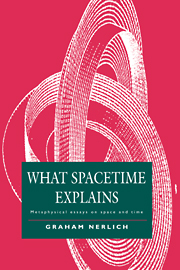Summary
Space, time and spacetime: these are the best candidates for entities which are real, which are central in scientific explanation, but which, in principle, elude any direct observation. Spacetime fuses space and time. It founds the system of spatio-temporal relations which unifies everything of interest to science and common sense; to be spatiotemporal is the touchstone of the real. But space, time and spacetime also seem ideal candidates for bogus entities, plausible but unwanted parasites which the body of ontology is prone to host. To change the metaphor, they look very like hirsute outgrowths on the face of metaphysics which it is the genius of Ockham's Razor to shave smoothly away.
These essays argue that space and time are comprised in spacetime, that spacetime is real, that its structure forms a main part of the apparatus of explanation of science and of plain good sense, but that it may nevertheless confuse us in more ways than one. No serious inquiry into this topic can avoid an involvement with geometry and the spacetime theories of modern physics. Some of these essays look quite searchingly at foundations, particularly of the theory of special relativity, the first and best-confirmed of the theories of Albert Einstein. But surely no one would mistake my work for that of a mathematician or physicist. There is a spattering of sentences in formal notation, but I have been at pains to include but few.
- Type
- Chapter
- Information
- What Spacetime ExplainsMetaphysical Essays on Space and Time, pp. 1 - 10Publisher: Cambridge University PressPrint publication year: 1994



